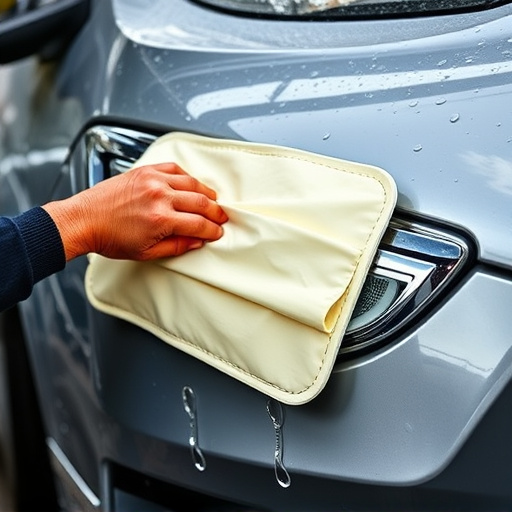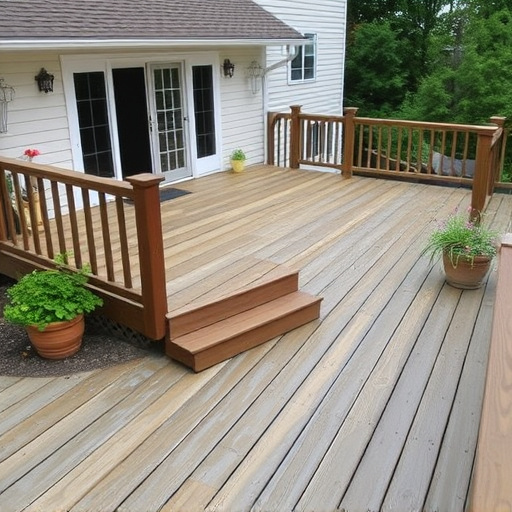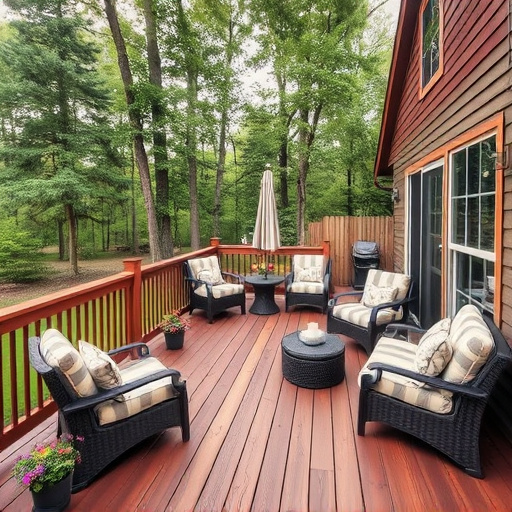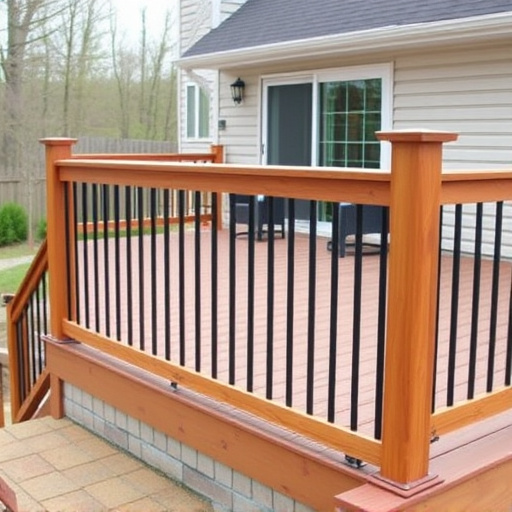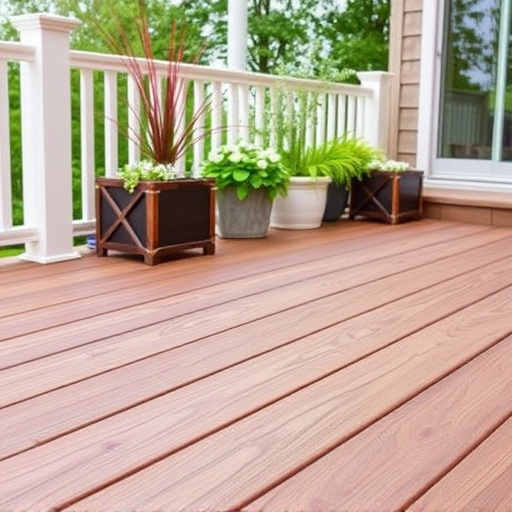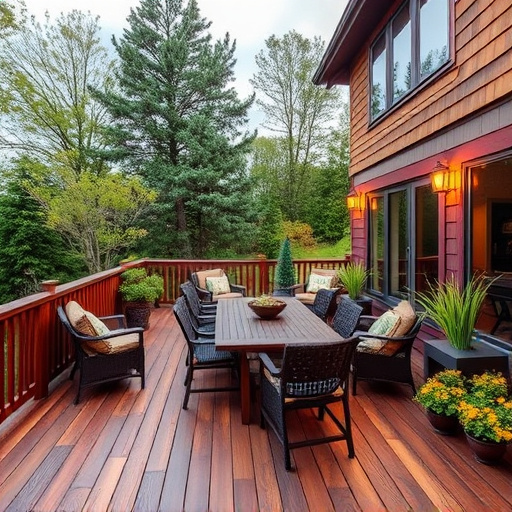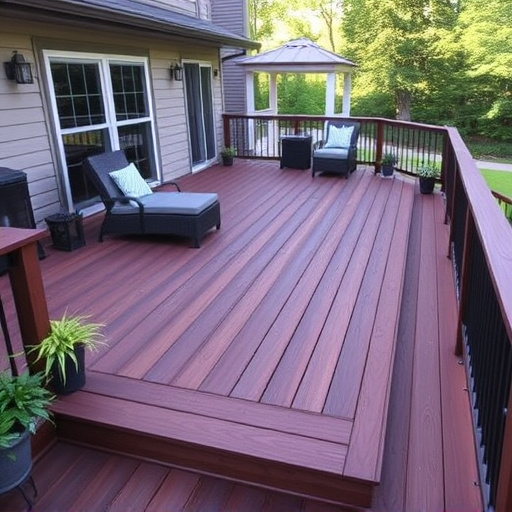Deck staining preserves and enhances outdoor spaces with diverse wood types like cedar, redwood, and exotic woods. Unique material properties dictate specific techniques and stain choices. Consulting professionals ensures tailored guidance for aesthetics and longevity. For cedars, water-based or semi-transparent stains preserve grain visibility. Redwood benefits from oil-based stains enhancing color resistance to decay. Exotic woods demand precise application with low-VOC water-based stains for optimal protection against environmental factors.
Transform your outdoor space with stunning deck staining techniques tailored for cedar, redwood, and exotic woods. This comprehensive guide explores the unique care and treatment these diverse materials require to achieve a rich, protective finish. Learn how to choose stains that enhance natural grain patterns while offering long-lasting protection against elements. Discover expert tips on applying stain to exotic woods, ensuring a flawless, durable result. Elevate your deck’s aesthetics and longevity with our insightful strategies for effective deck staining.
- Understanding Deck Staining for Different Woods
- Choosing the Right Stains for Cedar and Redwood
- Applying Stain: Techniques for Exotic Woods
Understanding Deck Staining for Different Woods

Deck staining is a crucial aspect of maintaining and enhancing the beauty of your outdoor space, especially when featuring unique wood types like cedar, redwood, and exotic woods. Each of these materials has distinct properties that can impact how stains adhere and perform over time. Understanding these differences is essential for achieving optimal results in exterior home improvements.
Cedar and redwood, known for their natural resistance to rot and insects, may require specific deck staining techniques to ensure the stain penetrates deeply enough without leaving a surface residue. Exotic woods, on the other hand, often demand specialized stains that can withstand varying levels of moisture exposure and UV rays. A professional siding or roof consulting service can provide guidance tailored to your wood species, ensuring your deck staining project is a successful one that complements your home’s exterior aesthetics for years to come.
Choosing the Right Stains for Cedar and Redwood
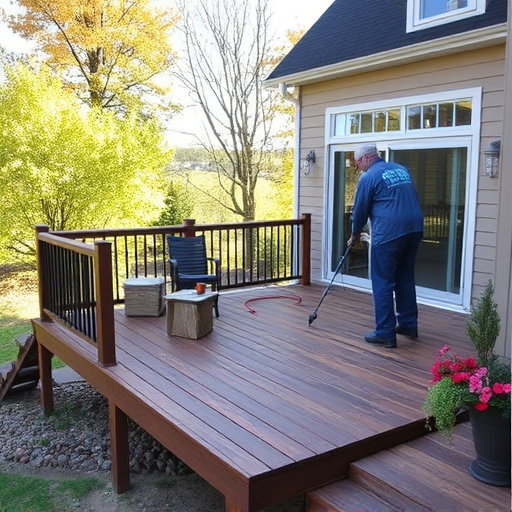
When it comes to decking materials like cedar and redwood, selecting the appropriate stain is key to enhancing their natural beauty and prolonging their lifespan. These woods have distinct characteristics that require specific staining approaches. Cedar, known for its resilience, benefits from a water-based or semi-transparent stain that allows some grain visibility while providing protection against moisture absorption. This type of stain also ensures the wood’s natural scent remains intact.
Redwood, on the other hand, requires a different strategy due to its high oil content. Oil-based stains are often recommended for redwood decks as they penetrate deep into the wood, enhancing its rich color and natural resilience against decay. When considering exotic woods, professional roof consulting services can guide homeowners towards specialized stains that cater to the unique properties of each species. Proper application techniques, along with high-quality home exterior services, ensure these stains not only beautify but also protect your deck from various environmental factors, including the elements and potential storm damage repair needs.
Applying Stain: Techniques for Exotic Woods

When it comes to deck staining for exotic woods, a careful approach is necessary. Unlike cedar or redwood, these unique varieties of wood have distinct characteristics that require specialized techniques. For optimal results, consider using a brush or pad applicator, which allows for more control and precision, especially in the intricate patterns often found on exotic lumber. This method ensures an even application, minimizing overspray and splatter, common issues when working with delicate surfaces.
For commercial siding and roofing projects featuring exotic woods, a stain with a low-to-moderate VOC (Volatile Organic Compound) content is recommended to maintain air quality. Additionally, opting for water-based stains can offer better control over the finish, allowing you to achieve a more consistent and aesthetically pleasing look. Remember, proper preparation of the wood surface, including cleaning and sanding, is crucial to ensure the stain adheres well and creates a long-lasting protection while enhancing the natural beauty of these unique woods.
Deck staining is an art that requires understanding the unique characteristics of different woods like cedar, redwood, and exotic species. By choosing the right stains tailored to each wood type, you can enhance their natural beauty and protect them from the elements. For cedars and redwoods, specific stains offer optimal results, while exotic woods may require specialized techniques for application. With the right approach, deck staining transforms your outdoor space into a stunning, long-lasting feature that adds value to your home.

